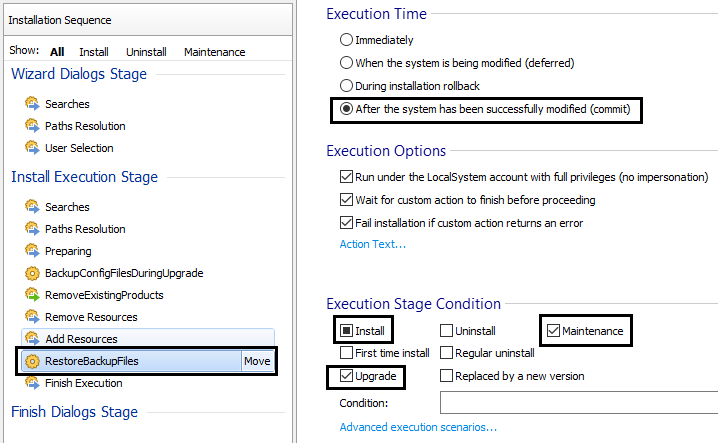

You can ignore failures in commit custom actions by authoring the custom action to ignore return codes. This means that depending on the commit custom action, a rollback may not be able to undo the changes made by the action. If a commit custom action fails, the installer initiates rollback but can only rollback those operations already written to the rollback script.

These can enable or disable features or components. The Windows Installer SDK has a section called ‘Conditional Statement Syntax’ where all the conditions you can use are outlined. You can then put your custom code right in the "User Defined" boxes on the bottom of the scrip modification page.Īdvanced Custom Actions and Conditions: Using conditions to enable or disable Features or Components. The simplest way to add a custom condition or action is to create a new scrip and select "User Defined" as the Condition or Action. NOT Installed – This is used to test if the product is not currently installed. If you use this condition, the Custom Action will only run during a Maintenance Installation. The basic Conditions for Custom Actions are as follows: Installed – This is used to test if the product is currently installed.

A common use for this is to only run the action during installation by using the NOT Installed condition. These are added as the inner text of the Custom element and prevent the action from running if the condition is false. After you've defined your custom actions and scheduled them into either InstallUISequence or InstallExecuteSequence, you have the option of adding conditions to them. If the source file is not already installed on the computer, deferred (in-script) custom actions must be sequenced after the InstallFiles. In your case the argument of the action function would be 'Create_file' since that is the name of the component you want to monitor.The custom action must be sequenced after the CostFinalize action so that the path to the referenced file can be resolved. I found it can be done using the actions() function. I have been trying to obtain the same thing, just simply getting the error message in flow, and sending it to myself.


 0 kommentar(er)
0 kommentar(er)
